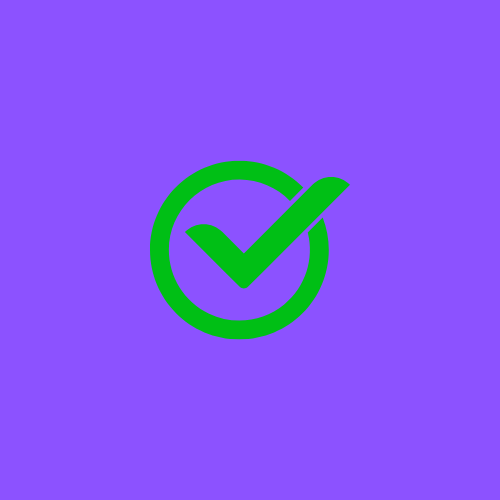Have you been hit by an unknown charge described as ‘VIOC’ on your credit card? There’s no need to panic! A lot of people have received similar charges labelled VIOC. This is why I’ve taken extra efforts – research + Investigations to provide the reason behind the charges.
So let’s take a quick look at what exactly VIOC stands for, why you’ve a charge from them, and what to do if you didn’t authorize the transaction.

What does VIOC charge Stand for?
VIOC simply means Valvoline Instant Oil Change. The company ‘Valvoline’ specializes in automotive maintenance and repair. They provide services like oil change, vehicle repair, and other services related to automobile maintenance.
The VIOC charge is a payment alias for Valvoline, and it could appear on credit cards as; POS Debit VIOC, POS PURCH VIOC, POS PURCHASE VIOC, CHKCARDVIOC GN0151 SAN DIEGO, etc.
Why You’ve a VIOC Charge on your Credit Card
There are two likely reasons why you’ve a charge from VIOC. The first reason could be because you recently had an oil change or automobile repair at Valvoline. The second reason could be someone else used your credit card to pay for services at Valvoline.
If you’re certain you it isn’t you or a close family member you gave your credit card to, then you’ve been targeted by credit card thieves.
What To Do If you didn’t authorize the charge
Inform Your Credit Card Issuer
Immediately contact your bank and inform them of the fraudulent transaction. You could do this by either reporting the fraud in their app or on their website. If fraud is confirmed, the issuer will likely cancel that card and issue you a new one with different numbers.
Update Your Passwords and Enable Two Factor Authentication
The second step you should take is updating your passwords. Make sure you check all of your other credit card accounts to see if they’ve also been compromised. It’s important to note that, even though only one card may have suspicious charges, you can’t be sure how the fraudster got the information. So make sure you change all of your passwords and PINs just to be safe.
Report the Fraud To Relevant Authorities
Report the scam to relevant authorities and organizations. This includes:
- Internet Crime Complaint Center (IC3): If you are in the United States, you can file a complaint with the IC3 at https://www.ic3.gov/.
- Your Local Consumer Protection Agency: Contact your local consumer protection agency or the equivalent regulatory body in your country.
- Better Business Bureau (BBB): File a complaint with the BBB if the online store is based in the United States.
Ways To Prevent and Outsmart Credit Card Fraud
- Always Use Secure Websites. Whenever you’re entering your credit card info online, look for “https://” in the web address. The “s” means it’s a secure site.
- Stay Alert from Phishing: Don’t Click on Links in Suspicious emails.
- Keep your PIN and passwords super secret. If you must share them, change them after the person is done using them.
- Be careful with public Wi-Fi when making online purchases or bank transactions. It’s safer to use a secure network.
- After shopping or banking online, make sure to clear your browser’s cache. It helps keep your info safe.
- Sign up for fraud alerts with your credit card company or bank. They’ll notify you if something fishy happens with your account.
- Before tossing important papers, like bank statements, shred them or burn them to protect your info.
- If you notice your card missing, tell your bank or creditor ASAP. They can help secure your account.
How To Protect Yourself From Scam Websites That Steal Credit Card Details
Aside from the obvious too good to be true discount sale, here are other ways to identify a scam website;
Check Website Registration Age
How old is the website? The domain age of a website tells a lot about a store’s legitimacy or transparency. Websites below 6 months old are often considered unsafe. You can find out a website’s age by checking on Who.is ( a free domain checker tool)
Find Out If The Website Has SSL Encryption
find out if the website is secured with SSL encryption. (https and padlock symbols). If the padlock symbol doesn’t appear near the website’s URL, then it means your personal and financial information is at risk at the store.
Verify The Business Address
Does The website provide return address? If Yes (Copy the address and paste on your browser. Google map would show if it is a real warehouse address or a residential address) If the address has also been used by other websites you’d see reviews in search results.
Search For Reviews Online
Are there customer reviews online? (It is advised that you sit it out if there are no customer reviews of the store. However if you’re not patient enough to wait you can send a mail to us to verify if the store is legit)
Final Thoughts
If you’ve a charge from VIOC, it means you recently had an oil change for your vehicle or your credit card was stolen and used to pay for services at Valvoline. You should contact your credit card issuer immediately and report the fraudulent transaction if you didn’t authorize the charge.
Credit card fraud or credit card scam is when someone steals or uses someone else’s credit card to buy things or make payments without permission from the card owner. A fraudster might trick the cardholder into agreeing to a payment by lying or exploiting their lack of knowledge. Sometimes, the card can be stolen, lost, or copied, and then used by fraudsters. So, if your card is lost, it’s important to tell the bank to block it to prevent unauthorized use.
See my latest alert – StealthPlate Defender Oil False Marketing Scam
